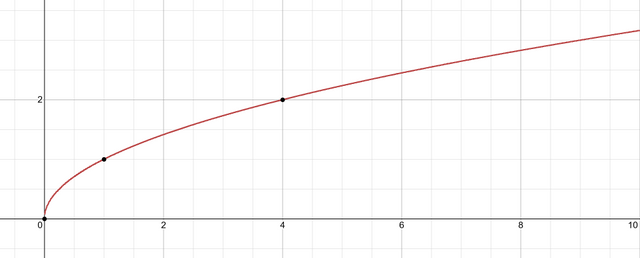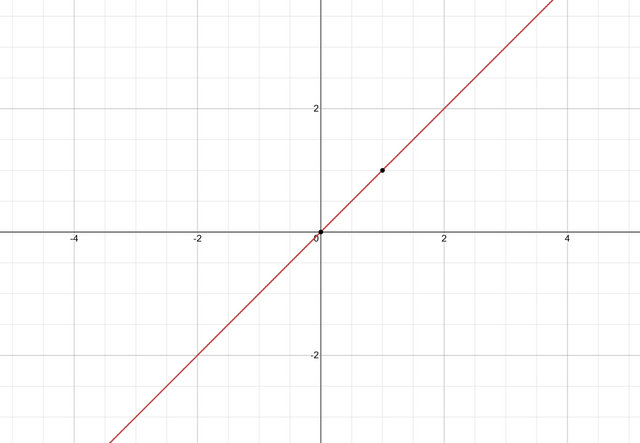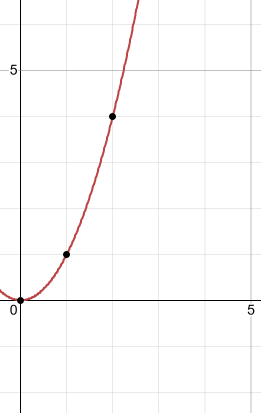Data-Driven Game Design
Game design by analysis involves using numbers to help guide design decisions.
My preferred way of doing this is always to make a spreadsheet. It makes it very easy to compare a bunch of factors and go into great detail. The hardest part of doing this is always getting data, figuring out what numbers you put where.
Basic Methodology
For instance, if you're making a game and you want to check the balance between all the different weapons you could use a spreadsheet to calculate factors like range, damage per hit, accuracy modifiers, expected damage per round, and so forth.
The challenge is always figuring out where that goes in terms of making future decisions based on the data you have.
It's important to be able to highlight certain elements of your design. You need to understand what the moving parts are and how they interact to really use data effectively.
You also need to be able to do enough math to make the decisions meaningful. I'm not particularly mathematically inclined, though I'm not bad at it, so I recommend three basic skills.
- Basic knowledge of probability: Enough to know how to calculate both dependent and independent chances of success with repeated occurrences. More is better, but not strictly necessary.
- Familiarity with basic number sense. I practice this in myself with constant small mental exercises. For instance, what is the sum of 6, 7, and 8? How much less is it than the sum of 8, 9, and 10? What is the average of both of the sets combined? You want to be able to do small calculations and a lot of different mathematical functions mentally without needing to take a break to do them on paper or use a calculator.
- Basic algebra. You should be able to use values and plug them into an equation (i.e. "solve for x"). Working with as many as three variables at a time is often necessary, but beyond that you're not really designing so much as taking an educated guess. Most of the time you just need to be able to work from basic assumptions; you're not usually going to change all of those variables at once, but you should be able to predict how changing one might effect the whole equation.
Spreadsheets make the numbers that you use in games very easy to visualize. They facilitate an easy comparison between multiple different elements. For instance, if you wanted to balance various weapons you could make a spreadsheet detailing their damage, accuracy, rate of fire, and so forth. Putting the information into a format that organizes it for you visually makes your life much easier.
Generally, I find that the best thing to do if you want to use a spreadsheet is to find a common ground for comparison, but also include notes on anything that makes something fall outside the mold.
To really use data you need to understand what the final product is. To use the example of balancing a weapon, you would want to calculate the damage per second/round, after accounting for things like inaccuracy, range, and the like.
You should figure out what the actual end goal of any game process is. It's good to also do this for challenges. If you know that your game is made up of human players fighting computer enemies, you might want to figure out which enemies do a certain amount of damage, and then intentionally balance players so they're able to defeat the enemy, but only by a margin that allows for a certain amount of risk.
Alternatively, this can help you understand where you should be placing numbers in relation to each other. Is generally helpful to player all the numbers fall on the same scale. If characters have ten health, you probably want damage value somewhere in the same area (not an order of magnitude above). You can be more complex, especially with video games as opposed to tabletop games, but in doing so you reduce the comprehensibility of the game mechanics.
Understanding Scaling Functions
Another thing to consider when looking at game design is how things scale. Lots of people have problems when they try to understand how this works. You have three types of scaling.

A graph illustrating a logarithmic function: y = x to the power of one-half x
Logarithmic scaling is what we used to describe diminishing returns. Mathematically you would achieve something like this by dividing by the same values that is increasing. For instance, if each point of damage in an attack takes away less health for each previous point of damage you would have an example of a logarithmic format.
Logarithmic processes and algorithms a really nice for a game design because you can work with very large numbers without making too many impacts in the design. The downside is that numbers become irrelevant because they no longer cause changes of noticeable magnitude.

A graph illustrating a linear function: y = x
Linear scaling is what happens but increasing in value create an outcome that is directly equivalent to the increase in that value.
To apply this to our example of an attack, if one damage took away one Health, that would be a linear process. This would also be true if one damage took away half a point or two points of Health.
Linear scaling doesn't permit a whole lot of fancy tricks, but it's easily understood by players. It has the additional advantage of being incredibly predictable from a game design point.

A graph illustrating an exponential function: y= x to the power of 2
Exponential scaling occurs when the increase is greater than linear. This would be happening if the amount of health that an attack took away is equal to the damage times itself. An attack dealing two damage would take away four health, add one dealing three damage would take away nine health.
Exponential scaling leads to extreme results, but it has a couple benefits. It is able to produce changes with a very large impact, which may be desirable in circumstances where characters are supposed to be increasingly powerful. However, after a certain point things become less meaningful because these shifts have such a great magnitude that they can easily break the scale of mathematics that a game works on.
Decisions from Data
Having the data available lets you know how you want to scale things. For instance, in Hammercalled all of the in-play game mechanics function linearly to make them easy for players to understand.
However, behind the scenes there is a logarithmic scaling in characters' investments in armor and weapons. The stronger one specialization gets the more it costs, meaning that people pay a price for specialization.
This is intentional, since the game operates using a blackjack system in which the goal is to be under a certain number on a die result to determine success. Because the range of results goes from 1 to 100, people who specialize run the risk of going outside the bounds of the system. Making the cost of advancement a function that leads to a logarithmic diminishing return prevents characters from too quickly exiting the range of outcomes supported by the system.
In other situations, you might choose to have strictly linear or even exponential scaling. The characters in Hammercalled were heavily limited in the character creation choices, it might make sense to reward them for specialization by giving them an exponential increase in power.
If characters could choose three things to be good at, and got five points to distribute between those three things that might make sense to have a character who invested three points in one thing be extremely good at it.
This is where data meets art. Designers can be intelligent and sophisticated when making decisions, but only if they're willing to consider both equation. Thinking about the sort of game that you want to create and how players interact with it can often change the sort of mathematics used to power the mechanics.
Competitive games require a particular eye to the mathematics of interactions. If working on a video game, you can take advantage of integrated metrics. For instance, the accuracy that a weapon is associated with in-game may differ from how players use it. The shotgun, for instance, may have a low chance of hitting from a distance, but if players can get up close undisturbed it may become a very powerful weapon. In this case, outcome-based decisions can be made. Do players generally do well with certain setups, or do they lose? If the shotgun is a powerful weapon and all the longer-ranged weapons are powerless, it may be an overpowered strategy to just ignore hits at a distance and rush in to use the shotgun.
If you need a very broad scale judgement, you can often just look at victory and loss rates for players who choose certain options. For instance, a strategy game with multiple possible civilizations could be analyzed through looking at the win rates of each civilization versus other civilizations.
With tabletop games, it is rare to have access to such a corpus of data. However, because mechanics can often be fully tested in a simulation (Anydice is a great resource for this), it is easier to look at potential outcomes by a calculating probability. Assuming that players exploit the rules optimally, which is itself a pretty big assumption to make, you can simply simulate the factors that lead into success and calculate what each element in the game does to contribute to those.
This is a time-consuming method, and it does lack the ability to report on how players actually play. However, as a second best it is valuable.
Besides, one can typically account for player ineptitude and for player mastery.
If you know that many players are going to play the game wrong, you simply account for this by making it so that the difference between the skill floor and the skill ceiling is not a matter of instant defeat or victory (remember as well that you are unlikely to have a perfect storm of all inept and all competent players).
For instance, Dungeons & Dragons spawns many class tier lists, with discussions over which character build is superior. However, assuming that everything is running correctly, it is the composition of the party's characters across different classes and not the participation of any particular class which determines success. So long as players have chosen characters so that there is someone to do damage, someone to heal, and characters who can deal with non-combat situations, everyone else is good enough at everything that they will not bring the party down (basically, D&D makes it hard for characters to be assertively bad by accident, at least in its most recent 5th Edition).
It's also possible to cheat and give players hints and tips during play so that you hopefully don't have to deal with people making the worst possible decisions, and you should also consider designing to avoid presenting worthless choices to players.
A specialist and generalist approach is what I use in Hammercalled. Characters generally have a certain amount of ability to do anything, but the experts enjoying much better success rate, and a better chance of exceptionally positive successes. When I do design work for the game, I make sure to consider both the best-case scenario and a middle-case scenario for any feature in the game when doing analysis.
Wrapping Up
Gathering data and doing math is a core part of game design. Fortunately, it doesn't require any exceptional aptitude, just a willingness to think carefully and evaluate possible misjudgments.
The goal of a designer when doing data driven Design is Tamika game that can be fun for everyone. Challenges important, but typically game should not be so punishing that newcomers cannot succeed. Knowing where all the numbers fall into play helps to make sure that everyone can have an experience that rewards their efforts and provides the most satisfaction.
Congratulations! Your post has been selected as a daily Steemit truffle! It is listed on rank 1 of all contributions awarded today. You can find the TOP DAILY TRUFFLE PICKS HERE.
I upvoted your contribution because to my mind your post is at least 7 SBD worth and should receive 312 votes. It's now up to the lovely Steemit community to make this come true.
I am
TrufflePig, an Artificial Intelligence Bot that helps minnows and content curators using Machine Learning. If you are curious how I select content, you can find an explanation here!Have a nice day and sincerely yours,

TrufflePig